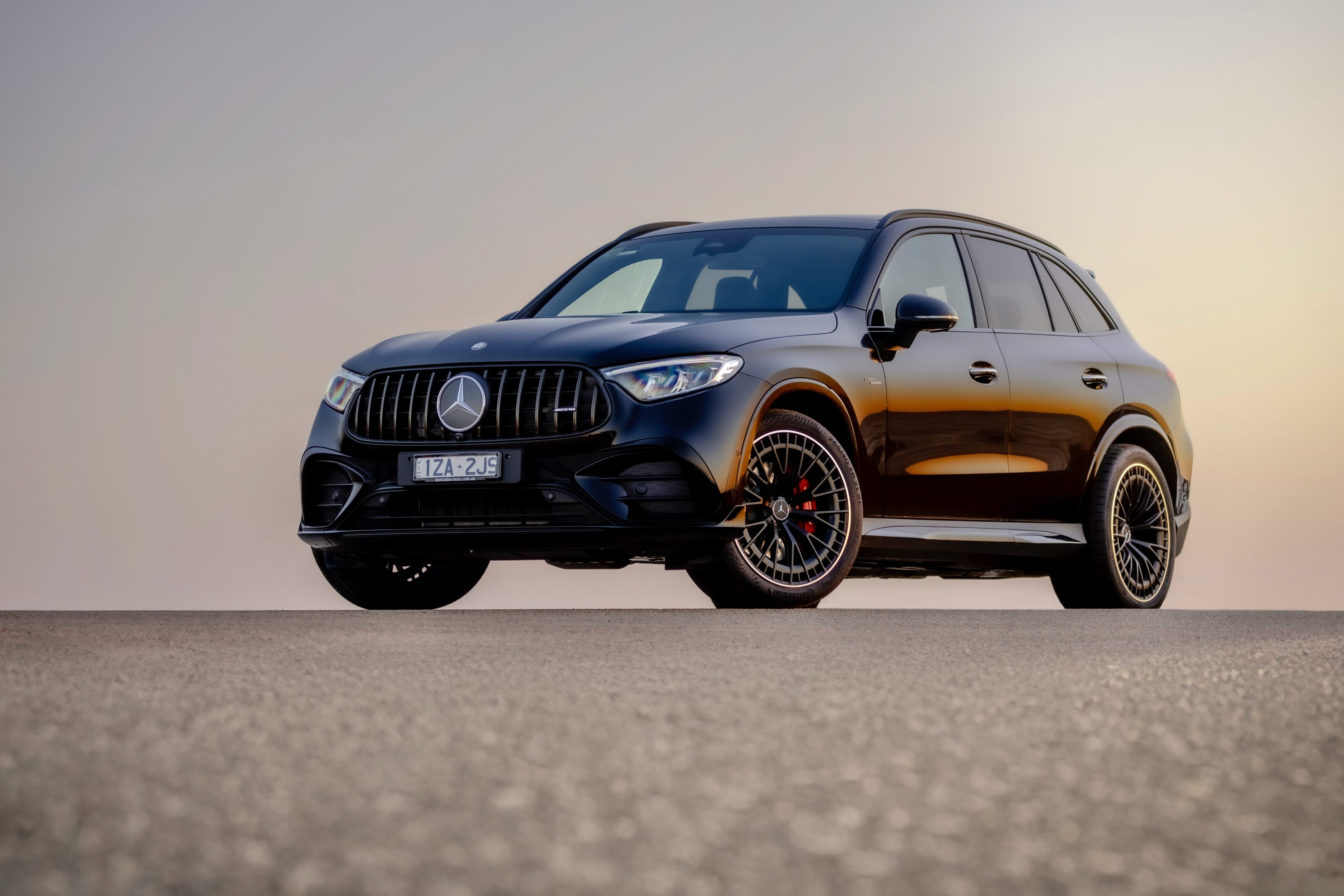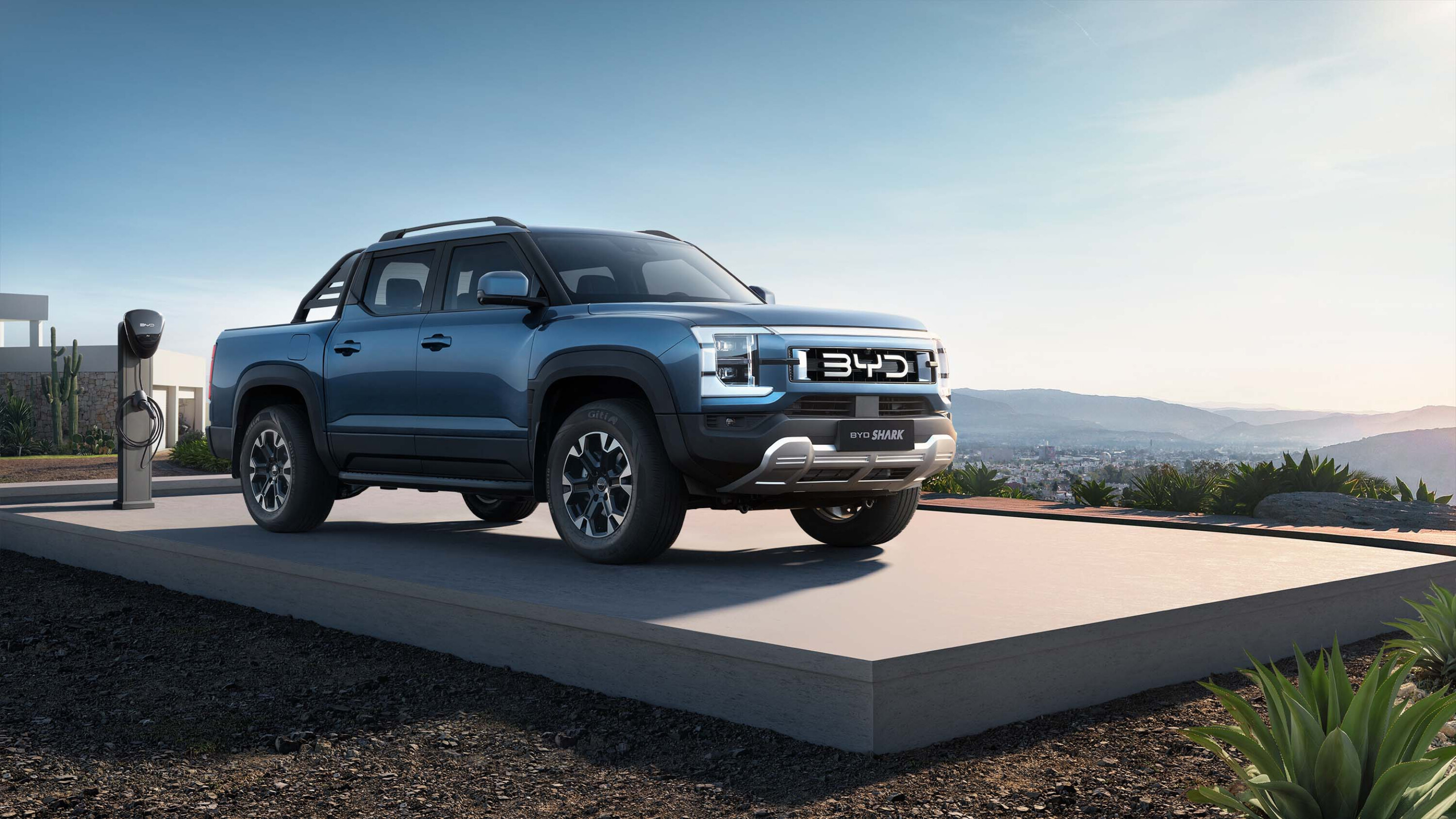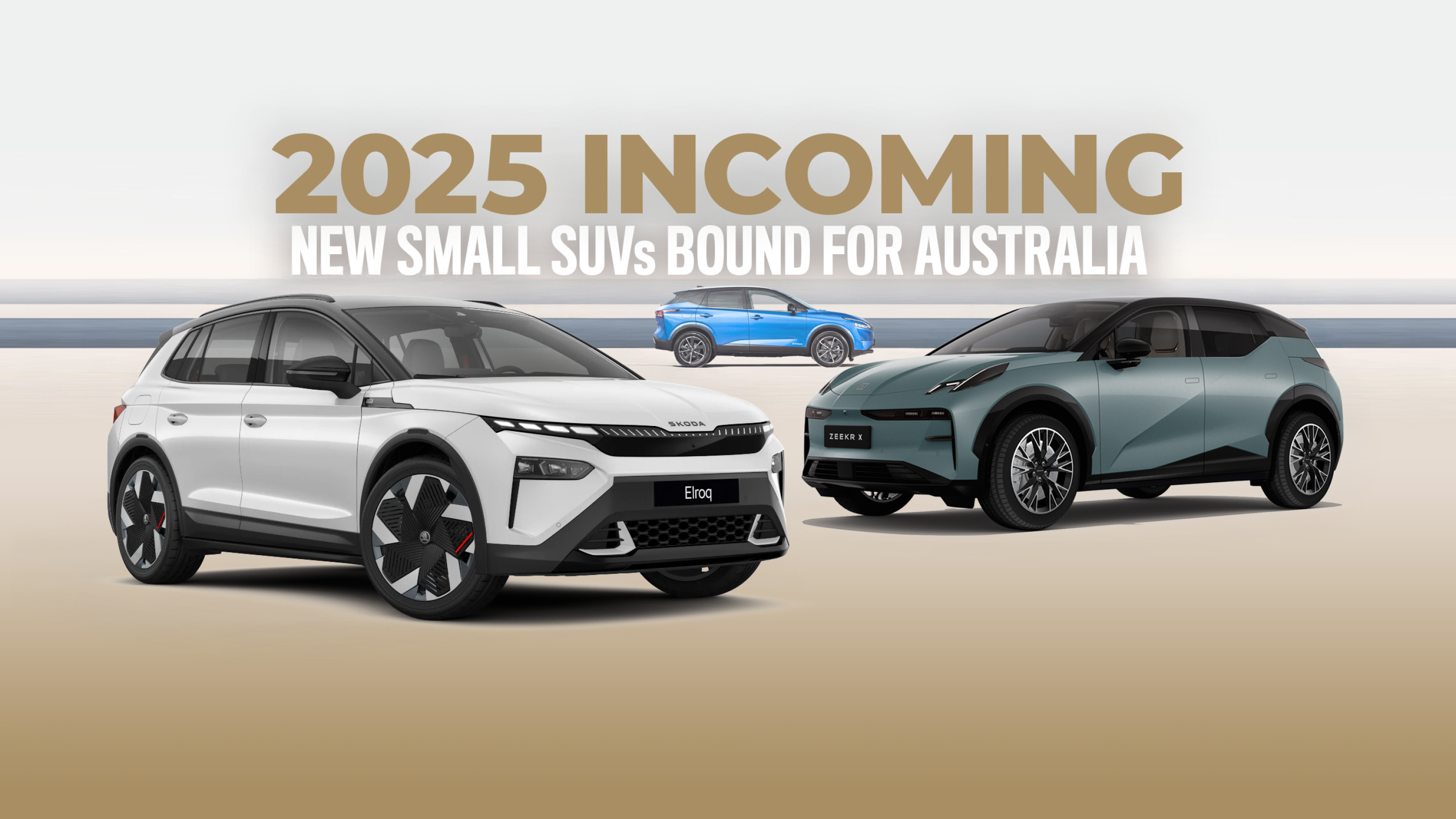
If you’re in the market for a small and mostly practical SUV, this is your go-to rundown of all the new options coming to Australia in the remaining weeks of 2024 and into 2025.
Of course, if you just can’t wait, you can check out our Best Small SUVs awards right now. See the linked story below, and keep reading for what’s to come in the year ahead!
Looking for something a little bigger, or much bigger? Check out our Medium SUV and Large SUV lists to see what’s coming for those segments in 2024.
JUMP AHEAD
- Aion V
- Alfa Romeo Junior
- BMW iX1 eDrive20 (new variant)
- BYD Atto 3 Up (Yuan Up)
- Chery Omoda 5 EV (electric)
- Cupra Formentor (facelift)
- Fiat 600e
- Ford Puma EV (electric)
- Genesis GV60 (facelift)
- Genesis GV60 Magma
- Honda HR-V update
- Hyundai Inster
- Jeep Avenger (electric)
- Jeep Compass (next gen)
- Kia EV3
- Leapmotor B10
- Lexus LBX
- MG ES5 (ZS EV replacement)
- MG ZS (new gen)
- Mini Countryman
- Nissan Juke
- Nissan Qashqai E-Power
- Nissan Qashqai facelift
- Peugeot 2008/E-2008 (facelift)
- Renault Captur (facelift)
- Renault Megane E-Tech (electric)
- Skoda Elroq
- Skoda Kamiq (update)
- Skoda Karoq
- Smart #1 and #3
- Suzuki Fronx
- Toyota C-HR
- Toyota Yaris Cross
- VW T-Cross (facelift)
- Volvo EC40 & EX40
- Volvo EX30 (electric)
- Zeekr X
Aion V
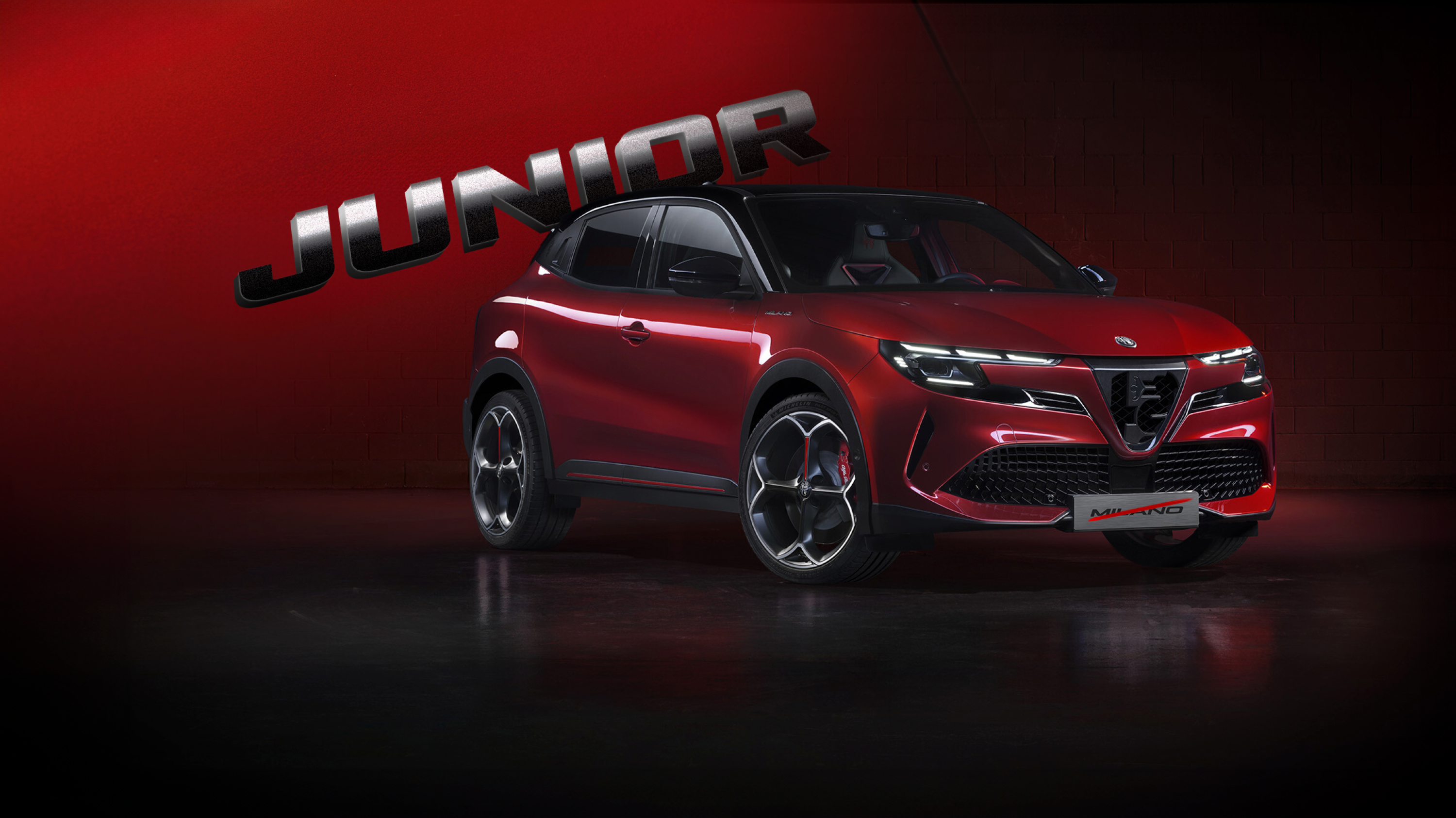
Chinese automaker GAC is preparing to enter the Australian market in mid-2025 under its Aion brand, with two models confirmed for local introduction: the Aion V electric SUV and the newly unveiled Aion UT electric hatchback.
The Aion V is a compact SUV built on GAC’s AEP 3.0 platform, featuring a 150kW motor and a lithium-ion battery providing a range of up to 750km on the China Light-Duty Vehicle Test Cycle (CLTC).
GAC promises a spacious interior, a three-tier storage system in the boot, and support for fast charging, enabling a 15-minute charge to add approximately 370km of range.
Alfa Romeo Junior
Alfa Romeo revealed its first fully electric compact SUV, the Junior, in April – but its late 2025 Australian launch is still a long way off.
Built on Stellantis’s E-CMP platform, the Junior offers a modern design and electric-only powertrain options after an initial name change from Milano due to legal restrictions.
Two variants are confirmed: a 112kW base model and a 177kW Veloce, both powered by a 54kWh battery with up to 410km range. Charging to 80% on a 100kW charger takes under 30 minutes, with urban driving potentially extending the range to 590km.
Australian pricing and full specifications will be announced closer to launch, with estimates starting around $60,000. Availability of the petrol-powered hybrid model remains uncertain, as Alfa Romeo plans to go fully electric by 2027.
BMW iX1 eDrive20
The iX1 eDrive20 arrived in August as BMW’s most affordable EV, starting at $78,900 before on-road costs.
The front-wheel-drive eDrive20 features a single motor producing 150kW and 247Nm, matched to a 64.7kWh battery. The iX1 eDrive20 claims a WLTP-rated driving range of up to 430km, making it a practical choice for urban and suburban use.
Charging options include AC charging at up to 11kW, taking approximately 6.5 hours for a full charge, and DC fast charging at up to 130kW, achieving 10-80% in around 29 minutes. These options cater well to various charging scenarios, from home setups to public fast chargers.
Inside, the iX1 eDrive20 is equipped with BMW’s latest iDrive 8 operating system, combining a 10.25-inch digital instrument cluster with a 10.7-inch central touchscreen. Wireless Apple CarPlay, Android Auto, and safety features such as adaptive cruise control and lane-keeping assist are also featured.
ON SALE NOW: New BMW X2 & iX2 (pricing) (X2 review) (iX2 review)
BYD Atto 3 Up (Yuan Up)
Originally an unlikely starter for Australia, BYD’s compact electric SUV could now be on the cards.
Indeed, it’s looking likely, with news that BYD has filed a trademark in Australia for the name Atto 3 Up. Although far from confirmed, there’s a decent chance this model is the Yuan Up, given the Atto 3 is known in China as the Yuan Plus.
The Yuan Up measures 4310mm long, 1830mm wide, and 1675mm high, with a 2620mm wheelbase. It offers two battery options, providing ranges of 301km and 401km under the CLTC standard.
Powertrain options include 70kW or 130kW motors, with acceleration times ranging from 12.9 to 7.9 seconds. Charging supports up to 65kW for faster recharging.
Chery Omoda 5 EV
The all-electric Omoda E5 SUV arrived in September, with the entry-level BX variant starting at $42,990 and the top-spec EX at $45,990.
The BX comes equipped with dual 12.3-inch screens, 18-inch alloy wheels, wireless Apple CarPlay and Android Auto, a wireless phone charger, and a full-size spare wheel. 
For an additional $3000, the EX variant enhances the offering by adding two extra speakers, synthetic leather seats with heating, a powered sunroof, and a 360-degree camera.
Both models are powered by a front-wheel-drive single electric motor producing 150kW and 340Nm, offering a range of up to 430km. Charging from 30% to 80% can be achieved in less than 30 minutes using a DC fast charger. 
Cupra Formentor facelift
Cupra unveiled the refreshed Formentor in April 2024, but it won’t reach Australia until around the same time in 2025.
The redesign showcases significant updates to its exterior and interior, along with changes to its powertrains.
The exterior features a refreshed look with new triangular LED daytime running lights and redesigned front bumpers, aligning its aesthetic with newer models like the Tavascan and Terramar. Inside, the cabin has been modernized to enhance the user experience, though specific details on the interior changes have not been fully disclosed. 
Fiat 600e
Fiat revealed the 600e in February, debuting as a larger, more practical alternative to the 500e hatchback.
Built on Stellantis’s eCMP2 platform, it features a 54kWh battery offering a WLTP range of up to 409 kilometers. The front-mounted electric motor delivers 115kW of power and 260Nm of torque, achieving 0-100 km/h in 9.0 seconds. 
The 600e provides a 360-liter boot and 15 liters of cabin storage, with a ground clearance of 199mm. Charging supports up to 11kW AC and 100kW DC, enabling a 10-80% charge in under 30 minutes. A petrol-electric hybrid variant is expected in mid-2024. 
While the 600e is confirmed for European markets, its availability in Australia remains uncertain. Fiat has not announced plans to release the model locally. 
Ford Puma Gen-E – CANCELLED
Confirmed for Australia back in early 2023, the Puma Gen-E has now been scratched from the company’s local plans.
Full story linked above.
Genesis GV60
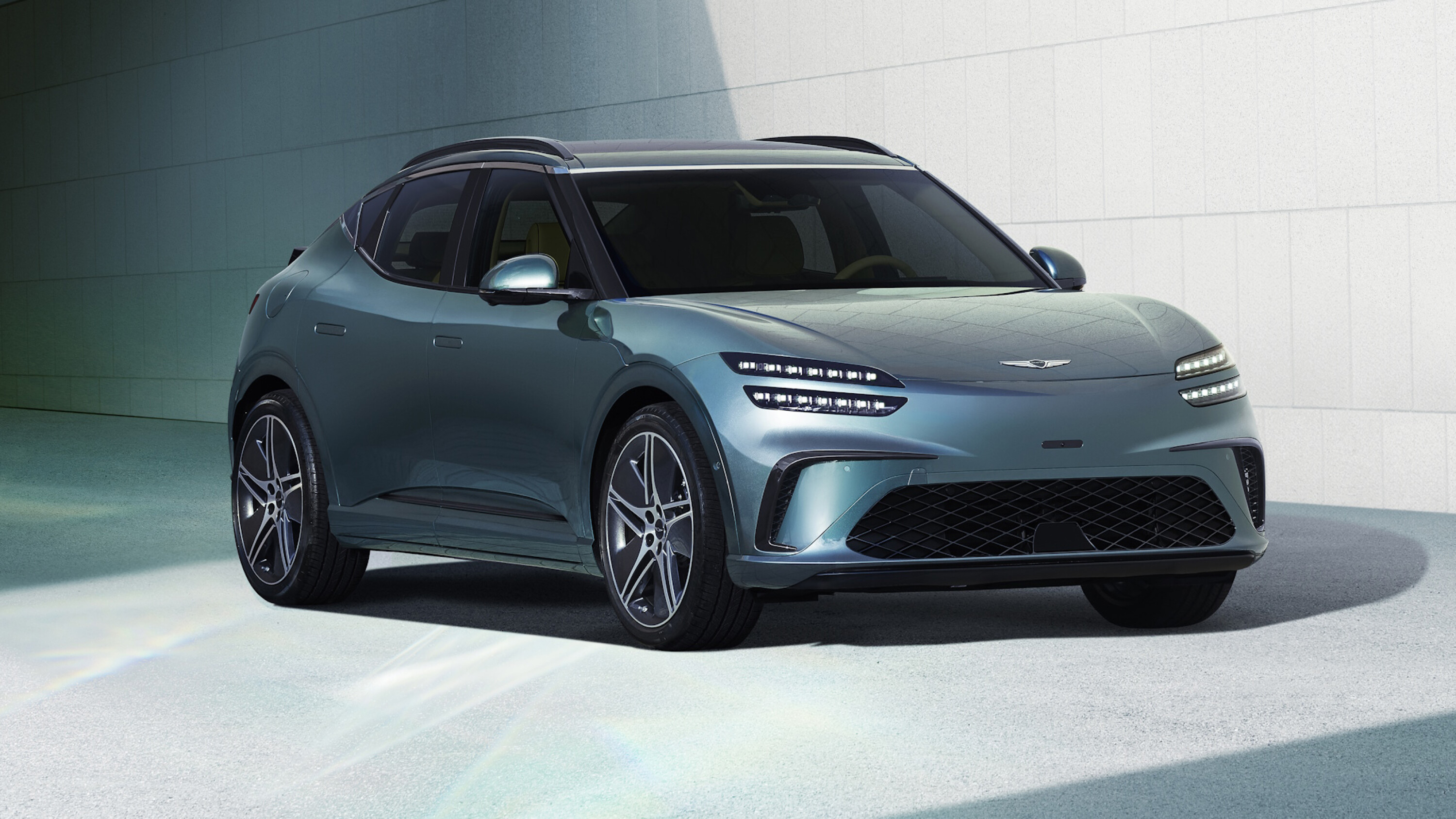
Hyundai’s luxury arm Genesis has introduced a styling and tech update to its first dedicated EV, the GV60.
For its midlife update, the GV60 gets a subtly refreshed exterior design, along with a bigger interior display and a new steering wheel. Technical details are yet to be revealed, however, with more to come to come in the next few months.
The updated GV60 will reach Australia in the third quarter of 2025.
Genesis GV60 Magma
Hyundai’s luxury arm Genesis unveiled the Magma name as a performance sub-brand in March, debuting with the GV60 Magma, a high-performance version of its electric SUV featuring a sportier design and advanced motor and battery upgrades.
The GV60 Magma is expected to deliver power outputs similar to the Hyundai Ioniq 5 N, with a premium interior featuring leather bucket seats and signature orange stitching.
Production begins in 2025, with plans to expand Magma models across the Genesis range, including potential availability in Australia.
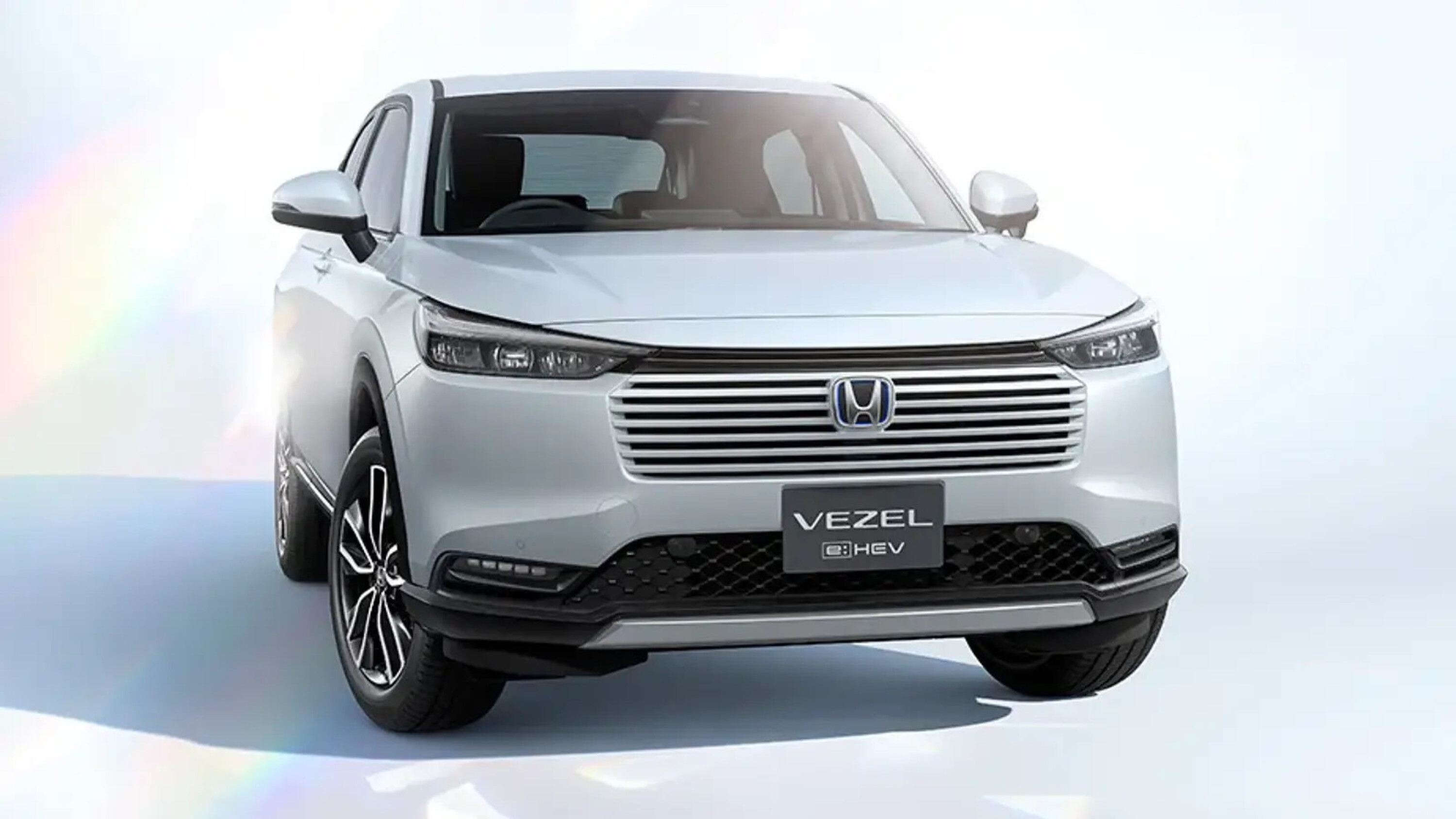
Honda HR-V facelift
Honda Australia launch the updated HR-V in October, starting from $34,900 drive-away.
The range includes three variants: Vi X petrol, e:HEV X hybrid, and e:HEV L hybrid, with the hybrids priced at $39,900 and $42,900 respectively. Two new exterior colours, Slate Grey and Botanical Green, are exclusive to hybrid models.
The e:HEV hybrids feature refined powertrain software for smoother transitions between EV and hybrid modes, with enhanced ride control and cabin soundproofing for improved refinement. Standard across all grades are advanced safety technologies like Honda SENSING, which now includes Traffic Jam Assist and Adaptive Driving Beam for hybrid variants.
Interior updates include a redesigned centre console for better accessibility and dual USB ports. The HR-V balances efficiency with practicality, offering a hybrid system in the e:HEV variants and a 1.5-litre petrol engine in the Vi X, ensuring versatile performance for urban and highway driving.
Hyundai Casper Inster EV
This baby Hyundai already existed as a three-cylinder petrol city car known as Casper, but this year brought the debut of an electric companion: the Inster.
Hyundai’s smallest and most affordable new EV will reach Australia in early 2025, and while pricing is still to be confirmed, leaked details suggest a drive-away price in the low $40K range.
The Inster will be available in two configurations, with a driving range beyond 300km in base form and over 355km in top-spec form.
It’s a properly little thing, too. The Inster measures 3825mm in length, 1610mm in width, and 1575mm in height, with a wheelbase of 2580mm. This positions it as a compact SUV, smaller than the already small Hyundai Venue, yet offering a longer wheelbase.
Jaecoo J5
Chery’s sub-brand Jaecoo will launch the compact J5 SUV in Australia next year, following the debut of the midsize J7.
The Jaecoo J5 spans 4380mm in length, 1860mm in width, and 1650mm in height, with a 2620mm wheelbase, making it comparable in size to a Hyundai Kona.
The J5 is expected to include a 13.2-inch touchscreen, a panoramic sunroof, and comprehensive safety technologies.
Australian specifications and pricing for the J5 will be confirmed closer to its release, expected in 2025.
Jeep Avenger
The Jeep Avenger was detailed earlier this year, but September saw a $4000 price reduction applied ahead of its coming debut.
The entry-level Longitude variant is now priced at $49,990, positioning it competitively against rivals such as the Mini Aceman, Renault Megane E-Tech, Kia Niro Electric, and Hyundai Kona Electric.
Jeep Compass
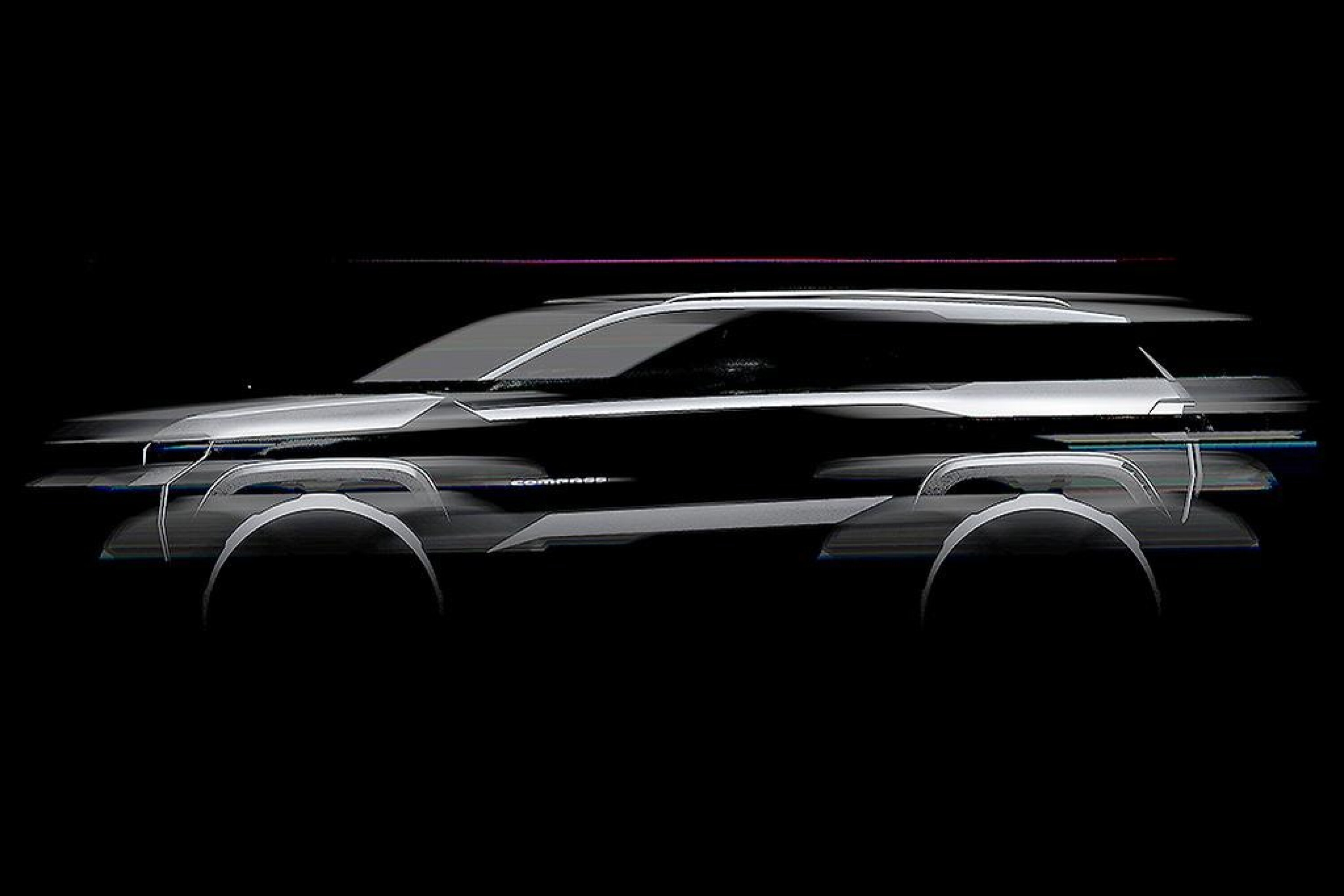
Jeep released a teaser sketch of the next Compass back in October, confirming it will offer petrol, hybrid, and fully electric powertrains.
Built on Stellantis’s STLA Medium platform, shared with the Peugeot 3008 and 5008, the new Compass is likely to showcase a more rugged look to suit its brand origins.
If Peugeot’s existing range is any indication, the hybrid model is likely to pair a 100kW 1.2-litre turbocharged three-cylinder petrol engine with a 21kW electric motor, managed by a six-speed dual-clutch automatic transmission.
Electric variants may include a base 160kW single motor version, a 230kW mid-range option, and a top-tier 240kW dual-motor setup, with the mid-range model potentially offering up to 700km range from a 98kWh battery.
European deliveries are slated for 2025, which could mean an Australian debut is as far off as early 2026.
Kia EV3
Kia’s electric SUV rival to the Hyundai Kona, Volvo EX30 and BYD Atto 3 has been unveiled with a 600-kilometre WLTP-rated driving range.
The EV3 will arrive in local showrooms during the first quarter of 2025, joining the EV6, EV9, and the forthcoming EV5.
In the UK, the EV3 is offered in three trim levels with two battery options. Pricing starts at £32,995 ($65K) for the base model and reaches £42,835 ($85K) for the top-spec GT-Line S with Heat Pump.
While direct currency conversions suggest higher prices, the EV3’s positioning relative to other models indicates a potential starting price around $50,000 in Australia. This would place it competitively against models like the BYD Atto 3 and MG 4.
Leapmotor B10
Leapmotor unveiled the B10 at the Paris motor show in October, debuting as a compact electric SUV that will follow the larger C10 to Australia next year.
The B10 features a design and technology similar to the C10 but in a smaller form factor. This positions it to compete with models like the Kia EV3 and Hyundai Kona EV.
While specific pricing details for the B10 are yet to be announced, it is anticipated to be more affordable than its competitors, potentially making it one of Australia’s most cost-effective electric SUVs.
Lexus LBX – On sale now
The Lexus LBX (‘Lexus Breakthrough Crossover’) gives the brand a more affordable, smaller hybrid for Australian customers starting at $46k.
Using a modified version of the Toyota Yaris Cross GA-B architecture, the LBX is shorter, narrower but marginally taller than the larger Lexus UX. It uses the Yaris’ 1.5-litre three-cylinder petrol engine, teamed with a more powerful electric motor and nickel-metal hydride battery for a total output of 100kW/185Nm.
Lexus claims that despite the Toyota parts sharing, it will be true to the luxury brand, as shown by the largest digital display in any of its cars to-date, sitting prominently in its ‘Tazuna’ themed interior.
MG ES5
MG revealed its ZS EV-replacing ES5 in November, introducing a larger electric SUV that bridges the small and medium segments.
The ES5 measures 4476mm in length, 1849mm in width, and 1621mm in height, with a 2730mm wheelbase – dimensions that surpass the ZS EV by 153mm in length, 40mm in width, and 145mm in wheelbase, while being 4mm lower.
Built on the same rear-wheel-drive architecture as the MG4, the ES5 is expected to offer improved driving dynamics and efficiency. While specific powertrain details are yet to be disclosed, the platform suggests potential for various battery and motor configurations.
The ES5 is set to launch in Australia within the next six months, with pricing and detailed specifications to be announced closer to its release.
MG ZS
The 2025 MG ZS is on sale now in Hybrid+ form, combining a 1.5-litre four-cylinder engine with a 100kW/250Nm electric motor for a total output of 158kW. This setup delivers a combined fuel consumption of 4.7L/100km.
The ZS Hybrid+ is available in two trims: the Excite, starting at $33,990, and the Essence, priced at $36,990. Standard features include keyless entry, LED lighting, a 12.3-inch touchscreen with smartphone integration, and a 7.0-inch digital instrument display.
Mini Countryman – On sale now
The new Countryman is available now, in both petrol and electric variants.
The line-up includes the Cooper Classic, Cooper S Classic, and the high-performance John Cooper Works (JCW) All4, with prices starting from $44,100 for the base model.
The electric Countryman SE All4 features a twin-motor setup producing 230kW, powered by a 66.4kWh battery, delivering an estimated range of 433 kilometers. The JCW variant boasts a 221kW petrol engine, offering a 0-100 km/h time of 5.4 seconds.
Nissan Juke
Nissan updated the Juke in October, introducing enhanced technology and interior features, along with a new N-Sport variant, all while maintaining previous pricing levels.
The new N-Sport model tops the range, featuring unique styling elements and two-tone options. Standard across the lineup are a 12.3-inch touchscreen display with wireless Apple CarPlay and Android Auto, and advanced safety features like Intelligent Cruise Control and Blind Spot Intervention.
Pricing starts at $28,890 for the base ST model, with the N-Sport variant priced at $38,390. Optional extras include a two-tone roof for $500 and premium paint for $750.
Nissan Qashqai E-Power – On sale now
Nissan added the Qashqai e-Power Ti hybrid to its Australian line-up in March, priced from $51,590.
The Qashqai E-Power features a 1.5-litre petrol engine generating electricity for a 140kW/330Nm electric motor, with fuel use listed at 5.2L/100km.
Key features include 19-inch wheels, quilted leather, a panoramic roof, a 12.3-inch infotainment screen, and Nissan’s ProPilot safety suite. A Bose sound system and head-up display are also included.
The E-Power hybrid system in the Qashqai uses only its 140kW/330Nm electric motor to power its wheels.
The 116kW 1.5-litre three cylinder operates as a generator to keep the vehicle charged, aided by regenerative braking – meaning owners only need to fill the Qashqai with petrol.
Nissan Qashqai facelift
Nissan unveiled the facelifted 2025 Qashqai in April, featuring a redesigned front end with a new grille and updated lighting elements, aligning its appearance with the Ariya electric SUV. 
Interior enhancements include upgraded materials and the integration of Google Built-In technology, offering improved connectivity and access to Google services. 
Officially, the MY25 Qashqai is scheduled to launch in Australia before the end of 2024. With that window now closing, we’ve asked Nissan for comment and will update this story when we know more.
Peugeot 2008 and E-2008
Australian Peugeot showrooms will catch up with Europe after pre-orders for the facelifted 2008 opened last April – with the first customers here taking delivery of the pre-facelift model.
That changes in 2024. The update takes the French SUV’s already sharp front-end a step further, with new headlight clusters, detailed grille with updated Peugeot logo and additional vertical stakes for a more striking look.
The 2008 Hybrid was also detailed in November, with prices starting from $42,490.
As for the E-2008, Peugeot revealed a facelifted version in early 2023. It was due here sometime in 2025, but has gone missing from the brand’s local website.
Renault Megane E-Tech (electric) – On sale now
The 2024 Renault Megane E-Tech is available now, in a single Techno EV60 specification with a 60kWh battery pack from $64,990 before on-road costs.
Megane E-Tech deliveries started earlier this year for what Renault calls an SUV despite dimensions closer to hatchback – although the smartly styled electric Megane shares its CMF-EV underpinnings with the Nissan Ariya SUV and Renault Scenic van.
It also uses a single electric motor delivering 160kW/300Nm with a 60kWh battery pack for a WLTP range of 450km, and 0-100km/h claim of 7.4 seconds.
Its 130kW DC charging can add 350km of range in 30 minutes, while cabin features include 12.3-inch digital drivers display, heated steering wheel and 440L (VDA) boot area.
Renault Captur
Renault unveiled the 2025 Captur in April, featuring a refreshed front design with new LED headlights, grille, and bumper, while the rear remains largely unchanged.
The interior sees enhancements in materials and technology, including an updated infotainment system.
In the UK, the Captur is offered with a new hybrid powertrain option. However, Renault Australia has yet to confirm whether this hybrid variant will be available locally.
The updated Captur is expected to arrive in Australia in early 2025. Pricing and specifications for the Australian market will be announced closer to its launch.
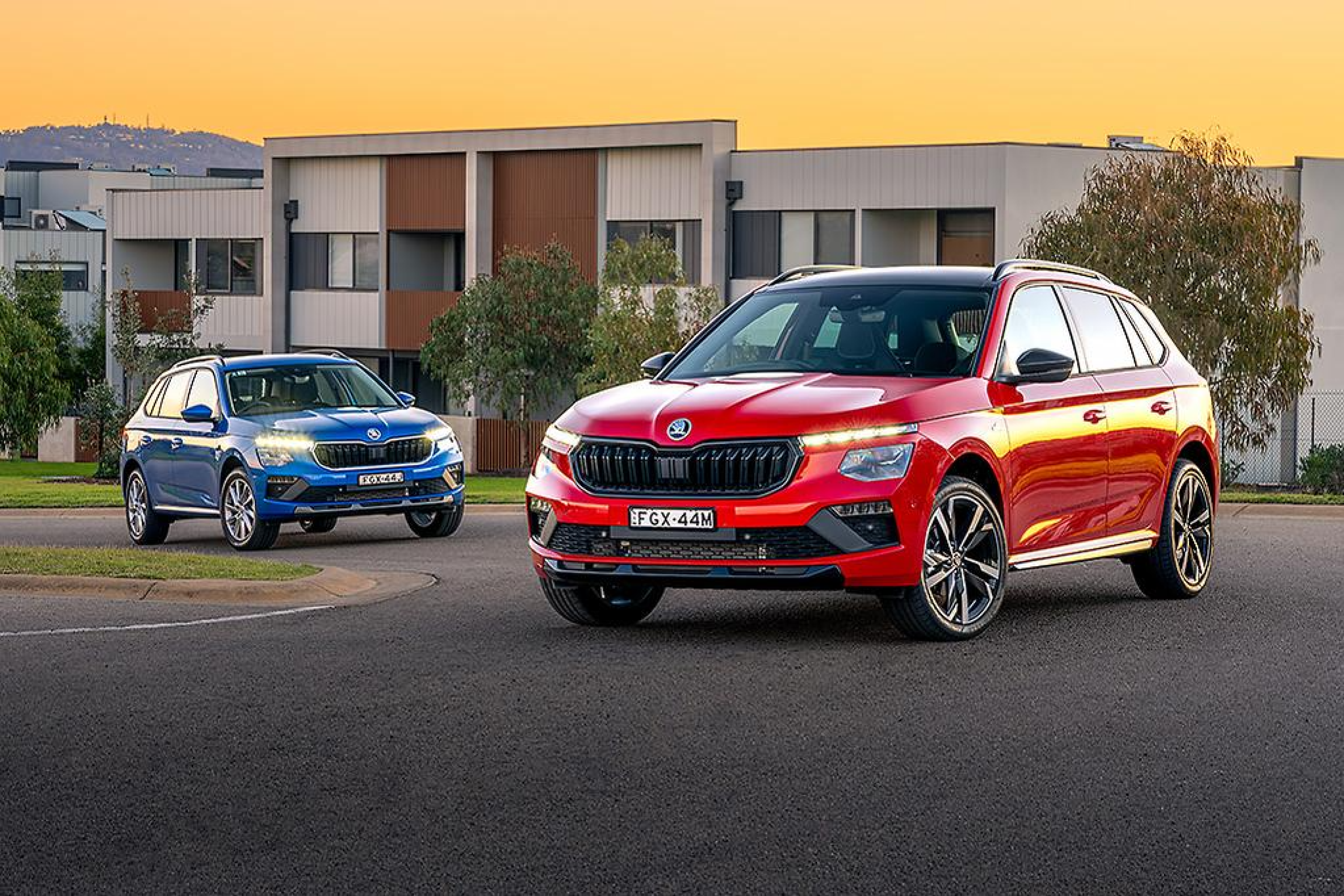
Skoda Kamiq
The 2025 Skoda Kamiq reached Australia in August with two variants: the entry-level Select, priced from $33,990, and the sportier Monte Carlo from $44,990.
The Select model comes equipped with features such as an 8.0-inch digital instrument cluster, dual-zone climate control, and wireless smartphone mirroring. The Monte Carlo variant adds enhancements like a 9.2-inch infotainment system with satellite navigation, heated sport front seats, and advanced Matrix LED headlights.
Both models retain their existing powertrains: the Select utilizes an 85kW/200Nm 1.0-litre turbo-petrol engine, while the Monte Carlo is powered by a 110kW/250Nm 1.5-litre turbo-petrol engine, both paired with a seven-speed dual-clutch automatic transmission.
Skoda Karoq
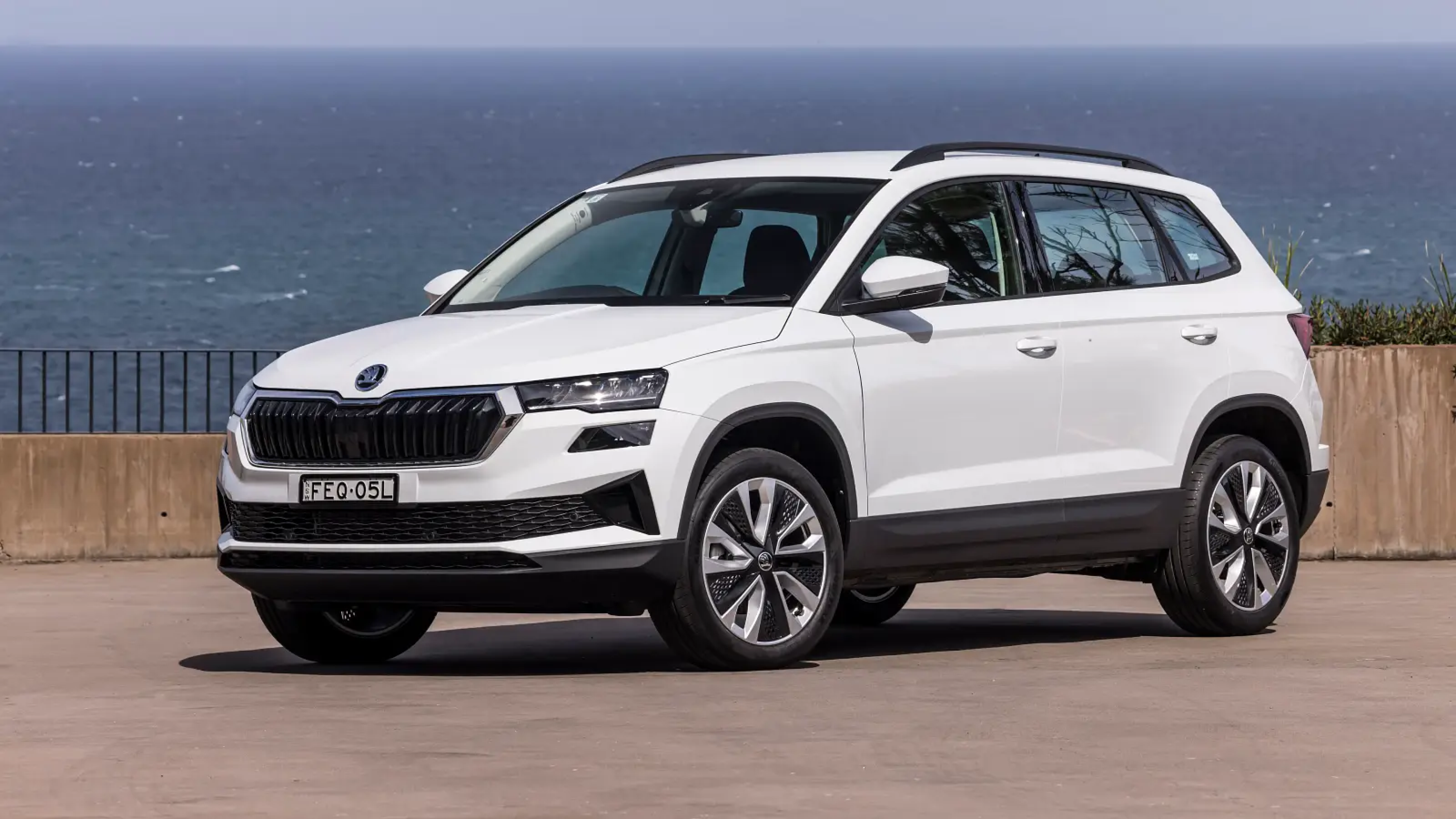
Skoda launched the updated the 2025 Karoq in August with two variants: the base Style from $42,990 and the Sportline from $49,990.
Both models are powered by a 1.4-litre turbocharged four-cylinder engine producing 110kW and 250Nm, paired with an eight-speed automatic transmission driving the front wheels.
Standard features across the range include an 8.0-inch touchscreen with wireless Apple CarPlay and Android Auto, dual-zone climate control, and advanced safety systems like autonomous emergency braking and lane-keeping assist. The Sportline variant adds a 10.25-inch digital instrument cluster, sportier exterior styling, and 19-inch alloy wheels.
The 2025 Karoq is available now, with Skoda Australia offering a seven-year, unlimited-kilometre warranty for vehicles purchased before December 31, 2024.
Skoda Elroq
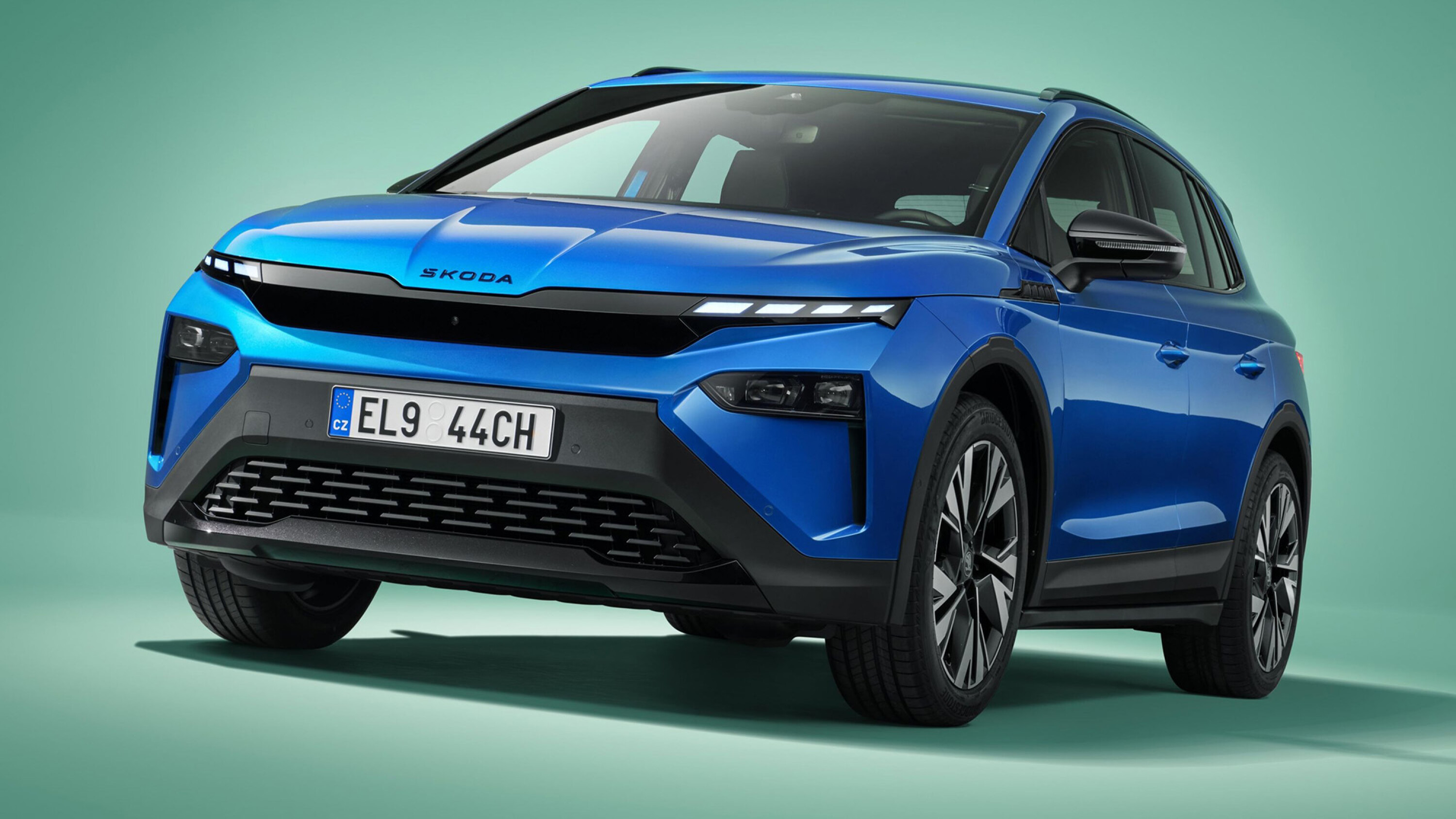
In October, Skoda unveiled the Elroq, an all-electric SUV set to replace the petrol-powered Karoq – hence, the similar naming.
Scheduled for an Australian release in July 2025, the Elroq will be Skoda’s second electric vehicle in the local market, following the Enyaq’s arrival in December.
The Elroq introduces Skoda’s ‘Modern Solid’ design language, featuring a slimmer grille adorned with S-K-O-D-A lettering and connected LED headlights.
Built on the Volkswagen Group’s MEB platform, the Elroq will be available in multiple drivetrain configurations. The base model, Elroq 50, features a 125kW rear-wheel-drive setup, while the Elroq 85x offers a 210kW all-wheel-drive system. Boot capacity stands at 470 litres with the rear seats up and expands to 1580 litres when folded. 
Smart #1 and #3
Smart returned to Australia in September, debuting with the new #1 and #3 electric SUVs.
Both models are available in three variants: Pro+, Premium, and Brabus. The #1 Pro+ is priced at $54,900 before on-road costs, the Premium at $58,900, and the Brabus at $67,900. The #3 Pro+ starts at $57,900, the Premium at $61,900, and the Brabus at $70,900. 
Despite the #3 being slightly larger than the #1—measuring 4.4 metres in length compared to the #1’s 4.27 metres—both models share electric drivetrains and platforms with the Volvo EX30.
The Pro+ and Premium variants feature a single electric motor producing 200kW and 343Nm, with rear-wheel drive. The Brabus variants add a second motor for all-wheel drive, increasing output to 315kW and 543Nm. Battery capacity across all variants is 66kWh, with driving ranges varying between 400km and 455km on the WLTP cycle, depending on the model and variant. 
Standard features on the Pro+ variants include 19-inch wheels, LED headlights, a panoramic roof, a 12.8-inch infotainment screen with wireless Apple CarPlay and Android Auto, a powered tailgate, and Smart Pilot Assist.
The Premium variants add matrix LED headlights, leather upholstery, a Beats 640W sound system, a heat pump, automatic parking assist, a 10-inch head-up display, 22kW AC charging, and 150kW DC charging. The Brabus variants gain unique exterior design elements, sports seats with microfibre suede upholstery, and a Brabus drive mode. 
Suzuki Fronx – Timing to be confirmed
The sub-4.0-metre Suzuki Fronx (‘Frontier Next’) will enter the light SUV segment in 2024 and debut the Japanese car maker’s mild-hybrid technology.
While Australian specs are yet to be confirmed for what is effectively a Baleno replacement, two drivetrains have been announced for the Indian market, where the Fronx is built.
That sees a standard 1.2-litre petrol engine and a more advanced 1.0-litre mild-hybrid turbo petrol with direct fuel injection and electric assistance.
While there’s tech inside the budget SUV, including wireless smartphone charging, the Fronx appears to lack Autonomous Emergency Braking (AEB) in India – mandatory for new models sold in Australia since March 2023.
Toyota C-HR – First quarter
Toyota launched its new 2024 C-HR earlier this year, with the entry-level GXL Hybrid starting at $42,990 before on-road costs, marking a significant increase over the previous model.
The new C-HR is exclusively available with hybrid powertrains, featuring Toyota’s fifth-generation hybrid technology. Standard equipment includes a 12.3-inch central touchscreen, a digital driver’s display, and advanced safety features.
The 2024 C-HR is 35mm wider and 30mm shorter than its predecessor, maintaining the same wheelbase, and showcases updated exterior styling with crisp LED lighting.
Toyota Yaris Cross
Toyota refreshed the Yaris Cross in March, introducing a larger 8.0-inch touchscreen with wireless Apple CarPlay and Android Auto, and a new 7.0-inch digital instrument cluster across all variants.
The GXL trim and above now feature connected satellite navigation and additional safety technologies, including low-speed reverse autonomous emergency braking and safe exit assist. 
The Yaris Cross is now exclusively available with hybrid powertrains, following the discontinuation of petrol-only models due to high demand for electrified options. Pricing has increased by $880 to $950 across the range, with the entry-level GX starting at $30,900 before on-road costs. 
VW T-Cross
Volkswagen updated the T-Cross for Australia in August, introducing a new R-Line variant and enhancing standard features across the line-up.
The range now includes the Life, Style, and R-Line models, with prices starting at $33,990 before on-road costs for the Life, $37,490 for the Style, and $40,990 for the R-Line.
All variants are powered by a 1.0-litre turbocharged three-cylinder engine producing 85kW and 200Nm, paired with a seven-speed dual-clutch automatic transmission driving the front wheels. Standard features include an 8.0-inch touchscreen with wireless Apple CarPlay and Android Auto, while the R-Line adds sportier styling and 18-inch alloy wheels.
The updated T-Cross is available now, with Volkswagen Australia offering nationwide drive-away pricing: $34,990 for the Life, $39,990 for the Style, and $43,990 for the R-Line.
Volvo EC40 & EX40
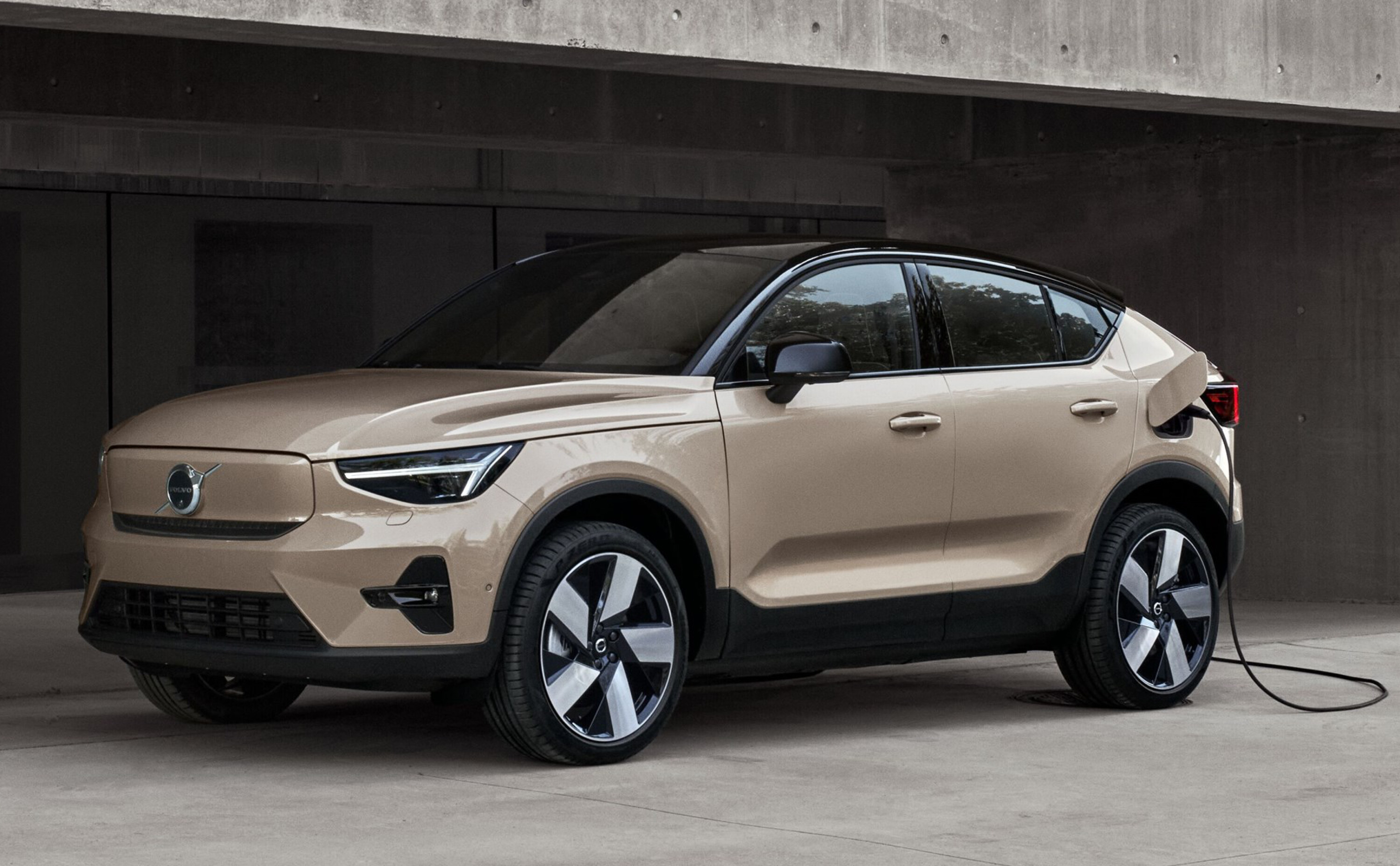
Volvo has renamed its XC40 Recharge and C40 electric SUV twins to EX40 and EC40, respectively, matching the EX30, EX90 and EM90.
The EX40 is available right now, in two variants: the Single Motor Extended Range, priced at $79,990 before on-road costs, and the Twin Motor Performance, starting at $89,990.
The Single Motor Extended Range variant features a rear-mounted electric motor producing 175kW and 420Nm, enabling a 0-100 km/h acceleration in 6.9 seconds. It is equipped with a 69kWh battery, offering a WLTP range of up to 460km. The Twin Motor Performance variant adds a front motor for all-wheel drive, increasing output to 300kW and 660Nm, with a 0-100 km/h time of 4.9 seconds and a range of up to 420km.
Both models support up to 150kW DC fast charging, allowing a 10-80% charge in approximately 28 minutes. Standard features include a 9-inch central touchscreen with Google built-in services, a 12.3-inch digital instrument cluster, and a suite of advanced driver assistance systems. The EX40 measures 4425mm in length, 1863mm in width, and 1651mm in height, with a wheelbase of 2702mm, providing a cargo capacity of 419 litres with the rear seats up.
The EC40 will reach Australia in the first half of 2025.
Volvo EX30 (electric)
The quickest vehicle in the Swedish brand’s 97-year history, the Volvo EX30 baby SUV is also its smallest, most affordable electric vehicle.
The China-built EX30 brings a three-model range starting from $60,000 – a tad more than the petrol powered, slightly larger Volvo XC40, but $14,000 less than an electric XC40.
The EX30 will be offered two guises: the Single Motor RWD Extended Plus and range-topping Twin Motor Performance AWD Ultra version. It’s the hero EX30’s 0-100km/h claim of 3.6 seconds that sets a new performance benchmark for the car maker, but the Single Motor Extended Plus is also a strong performer.
Zeekr X
Zeekr launched the X here in November, offering two variants: the rear-wheel-drive (RWD) model priced at $56,900 and the all-wheel-drive (AWD) version at $64,900, both excluding on-road costs. 
The RWD variant is equipped with a 66kWh lithium-ion battery, delivering 200kW of power and 343Nm of torque, enabling acceleration from 0 to 100 km/h in 5.6 seconds. It offers a WLTP driving range of 446km. The AWD model increases output to 315kW and 543Nm, achieving 0 to 100 km/h in 3.8 seconds, with a WLTP range of 425km. 
Both models support DC fast charging, allowing a 10-80% charge in approximately 30 minutes using a 150kW charger.
And remember…
if you just can’t wait for these incoming options, you can check out our 2023 Best Small SUVs awards right now.
We recommend
-
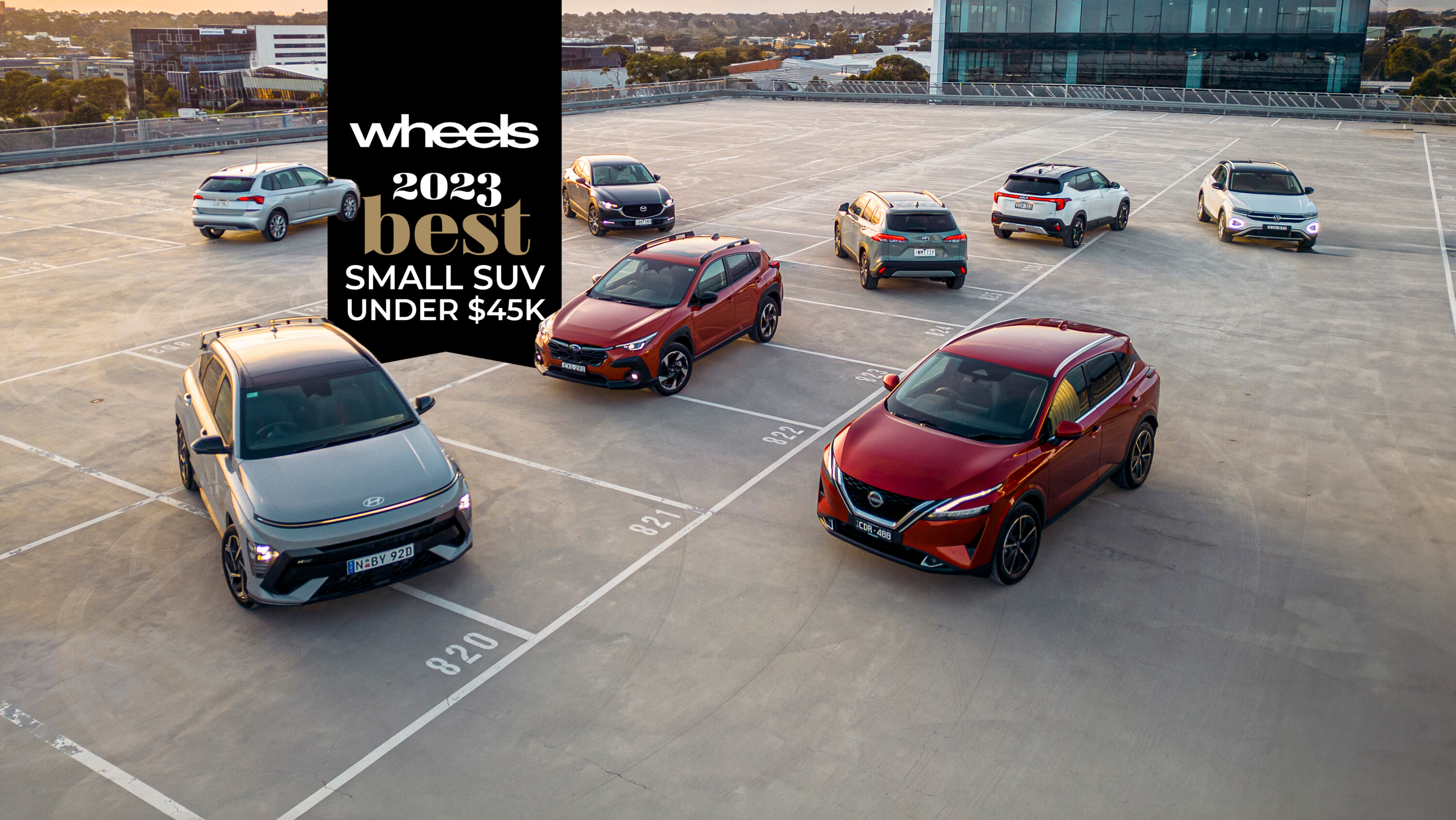 Best Small SUVs
Best Small SUVsBest Small SUV Under $45K
Looking for an SUV that offers plenty of features, for less than $45,000? We run the rule over eight contenders, including new-generation versions of the Hyundai Kona, Nissan Qashqai, and Subaru Crosstrek (formerly XV)
-
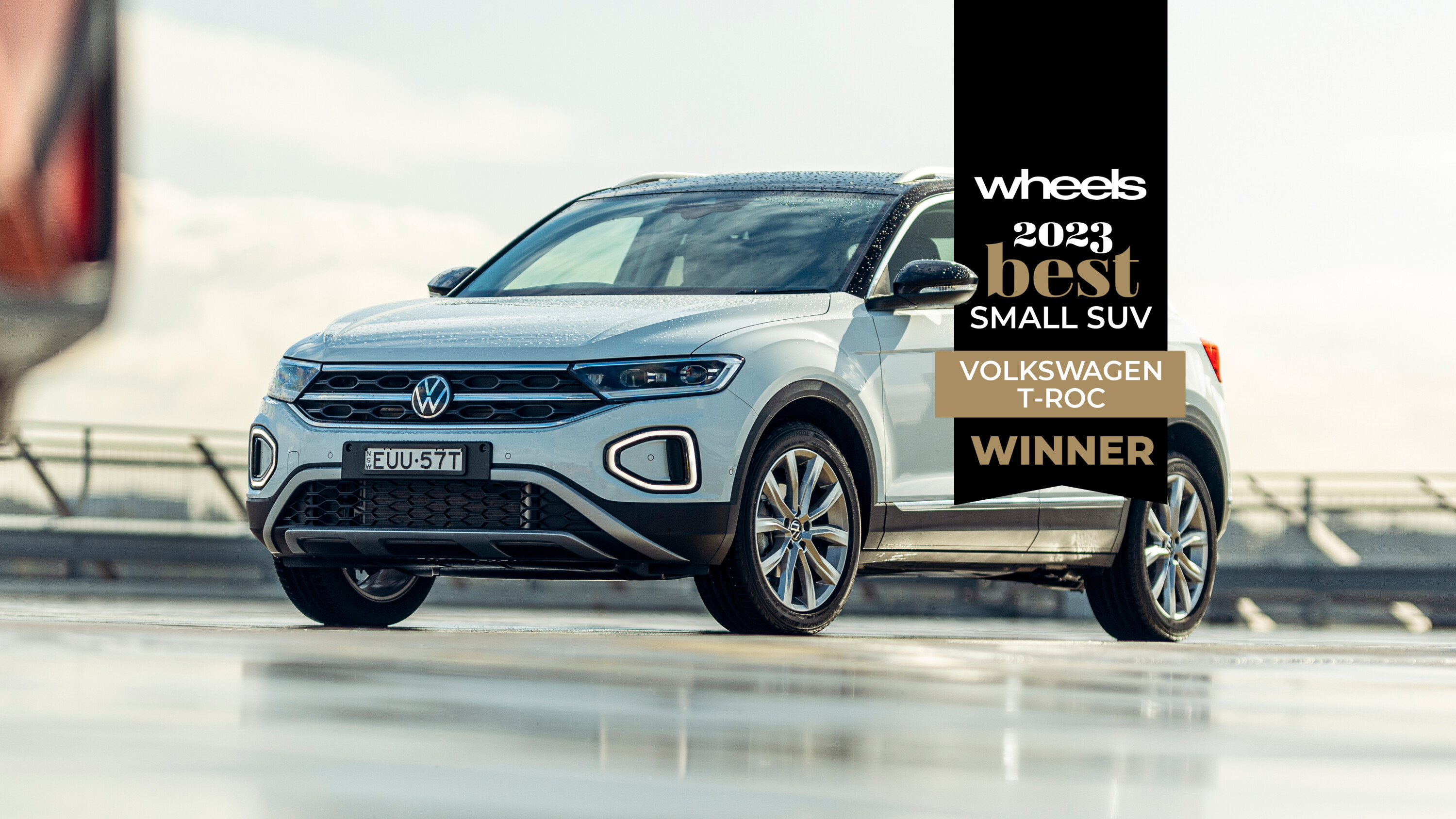 Best Small SUVs
Best Small SUVsBest Small SUV Winner: Volkswagen T-Roc
The Volkswagen T-Roc is the 2023 best small SUV in Australia, thanks to a well-considered range majoring on value, equipment and driveability.
-
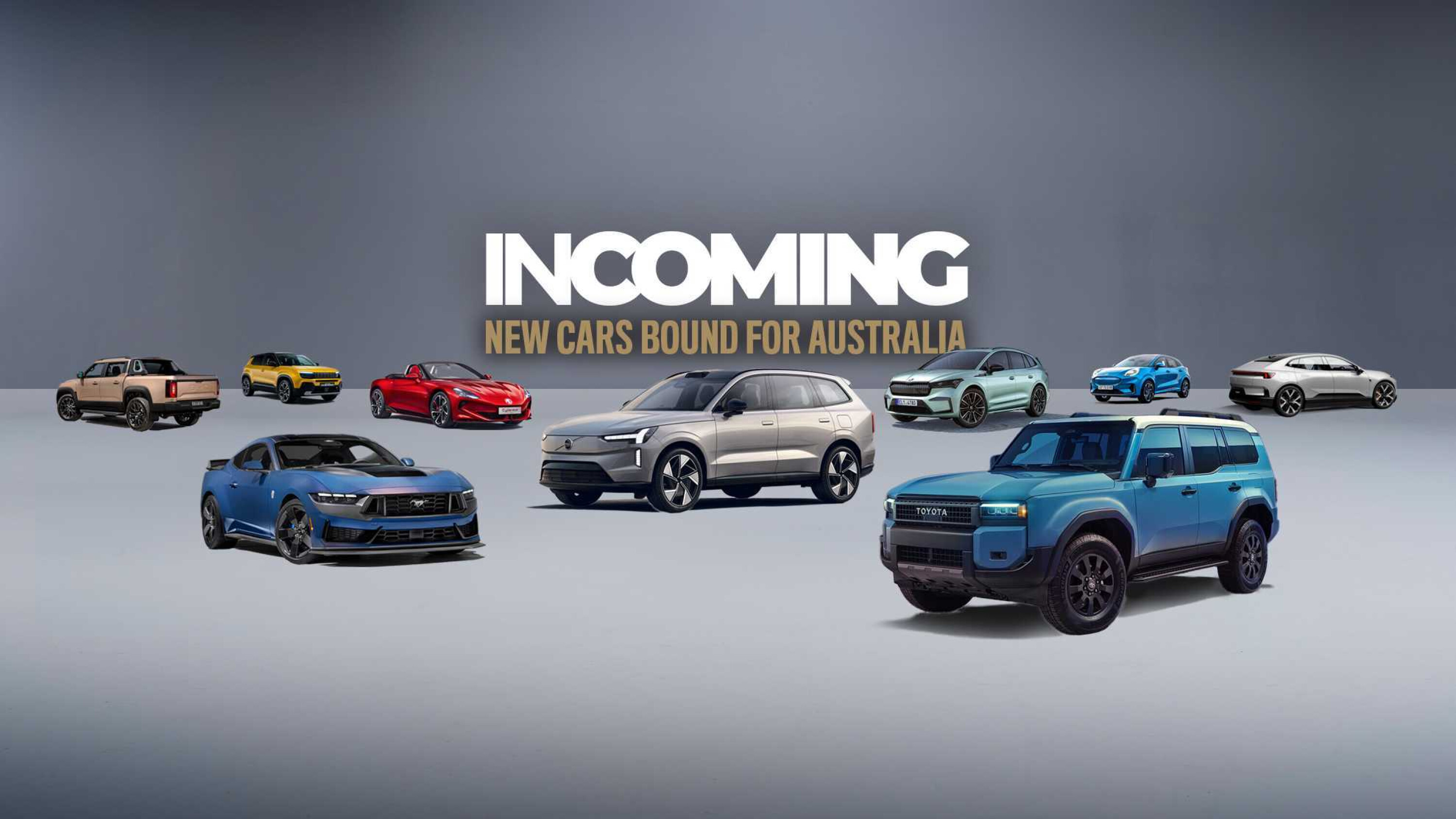 News
News2025 New Car Calendar: All the new cars coming to Australia
Take a look at our list of what is expected to launch in Australia in 2025 – plus those we might not see locally just yet


